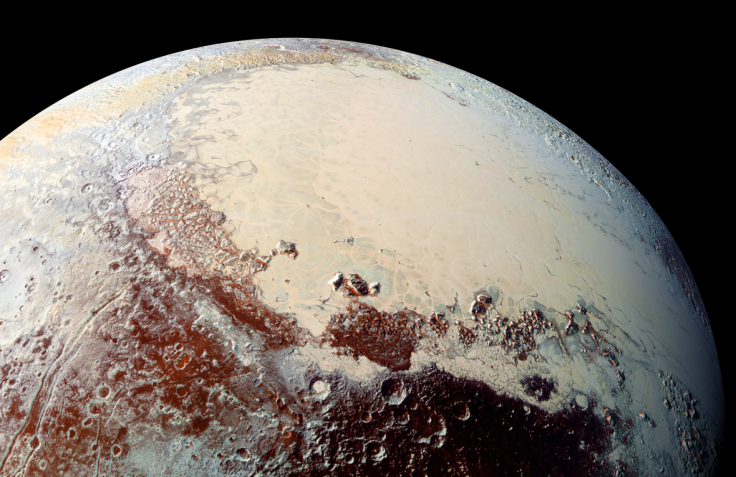Is Pluto A Planet? It Is, And So Is Our Moon, Team Of NASA Scientists Argues

Are you one of those still upset about Pluto’s demotion from the ranks of a planet? Do you lie awake at night, rankling with righteous anger over the injustice done to the erstwhile ninth planet in our solar system?
If so, Alan Stern is coming to your rescue.
The principal investigator of NASA’s New Horizons mission to Pluto has, along with five of his colleagues, submitted a proposal to the International Astronomical Union (IAU) calling for a change in the way a planet is defined.
“A common question we receive is, ‘Why did you send New Horizons to Pluto if it’s not a planet anymore?” Stern and his colleagues said in the proposal. “To mitigate this unfortunate perception, we propose a new definition of planet, which has historical precedence. In keeping with both sound scientific classification and peoples’ intuition, we propose a geophysically-based definition of ‘planet’ that importantly emphasizes a body’s intrinsic physical properties over its extrinsic orbital properties.”
Under the changes championed by the researchers, a planet would be redefined as a “sub-stellar mass body that has never undergone nuclear fusion and that has sufficient self-gravitation to assume a spheroidal shape adequately described by a triaxial ellipsoid regardless of its orbital parameters.”
Simply put, Stern et al.’s planets are “round objects in space that are smaller than stars.”
Contrast this to the IAU’s current — and, in the opinion of the researchers, inherently flawed definition — which states that a celestial object can only be called a planet if it “(a) is in orbit around the Sun, (b) has sufficient mass for its self-gravity to overcome rigid body forces so that it assumes a hydrostatic equilibrium (nearly round) shape, and (c) has cleared the neighborhood around its orbit.”
Stern and his colleagues argue that this definition leaves a lot to be desired. One, it recognizes as planets only those objects orbiting our sun, and not those orbiting other stars or orbiting freely in the galaxy; and two, the fact that it requires “zone clearing” makes all the current planets in our solar system ineligible for planethood.
“By requiring zone clearing the mathematics of the definition are distance-dependent, requiring progressively larger objects in each successive zone,” the researchers said in the proposal. “For example, even an Earth sized object in the Kuiper Belt would not clear its zone.”
If the IAU approves these changes, Pluto won’t be the only addition to the list of planets in our solar system. Several dwarf planets such as Ceres and many moons — including Earth’s, Jupiter’s and Saturn’s — would also be added to the list.
Our solar system may soon boast of close to a hundred “planets.”
“Teachers may introduce new moon planets to their students with phrases such as, ‘In the 2020s, NASA will send a spacecraft to study the planet Europa, which orbits around Jupiter as one of its many moons,’” the researchers concluded.
© Copyright IBTimes 2024. All rights reserved.












